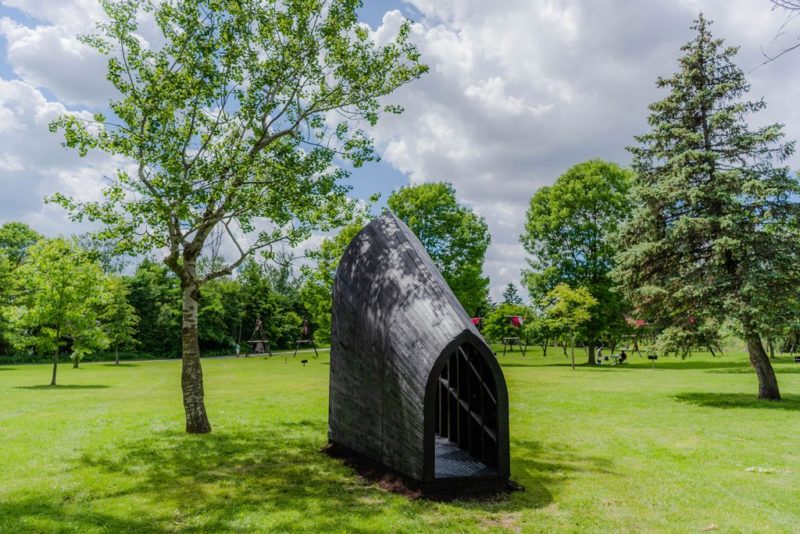Artist Oluseye Ogunlesi builds a Black Ark to explore Canada’s colonial history
Share
Explore Our Galleries
Breaking News!
Today's news and culture by Black and other reporters in the Black and mainstream media.
Ways to Support ABHM?
By Betty Wood, The Spaces

What looks like the hull of a long-lost ship has appeared at Toronto’s Ashbridges Bay – a haunting installation by Nigerian-Canadian artist Oluseye Ogunlesi exploring Canada’s ‘forgotten’ role in the Trans-Atlantic slave trade.
Dubbed Black Ark, the 12-ft-tall immersive sculptural installation is presented as part of the Luminato Toronto Arts Festival. It’s conceived as a ‘symbolic home’ to commemorate the survivors of slavery, with its form evoking both the pitched silhouette of a chapel and the bow of a ship.
Most Canadians are familiar with the Trans-Atlantic slave trade when viewed through the lens of the US and subsequent civil war, and children are taught about the Underground Railroad at school – the secret network which transported enslaved African Americans from the States to ‘freedom’ in Upper Canada.
But the pivotal role Canadian shipyards had, building over 60 ships to transport stolen people from Africa to the American continent, is less well known. Or that ports such as Halifax hosted slavers ships (according to The Coast, the last ship to transport Africans to slavery was actually helmed by a Nova Scotian). Ogunlesi’s architectural instillation illuminates and invites viewers to reflect on this uncomfortable part of Canada’s colonial history.
See more images of this beautiful and important art.
Earlier this year, a different type of art made its way to the Library of Congress.
Find more Black culture stories here.









Comments Are Welcome
Note: We moderate submissions in order to create a space for meaningful dialogue, a space where museum visitors – adults and youth –– can exchange informed, thoughtful, and relevant comments that add value to our exhibits.
Racial slurs, personal attacks, obscenity, profanity, and SHOUTING do not meet the above standard. Such comments are posted in the exhibit Hateful Speech. Commercial promotions, impersonations, and incoherent comments likewise fail to meet our goals, so will not be posted. Submissions longer than 120 words will be shortened.
See our full Comments Policy here.